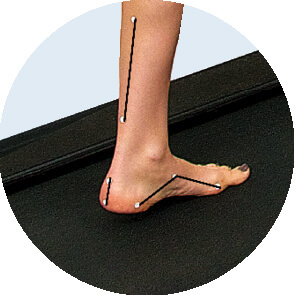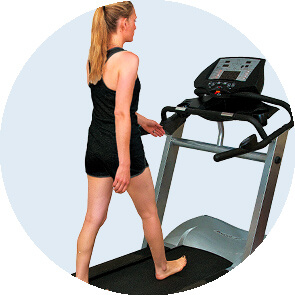
The OPS postural assessment aims to gain a better understanding of the functioning of the body as a whole. It has the relevance of coupling static and dynamic biomechanical analyses of the whole body.
The OPS assessment is a Swiss method of analysis that helps to find the causes of body imbalances in posture and movement. This analysis is carried out by a certified orthokinesic specialist.

In order to avoid muscular and/or joint injuries, it is essential to respect the body's balance.
This method makes it possible to anticipate possible posture problems and their repercussions. The OPS postural assessment is suitable for children, adolescents, adults, seniors and sportsmen and women.
Thanks to its scientific researchers, the OPS Clinic has developed high-tech tools for the analysis of human biomechanics. The OPS postural assessment consists of analyses of posture, walking, running, back, feet, eyes, jaws...


Static and three-dimensional study of posture. This analysis allows us to analyse body deformations in a global vision.


Static and dynamic study of the back in order to know the deformations and the vertebral stages in loss of mobility. This examination can detect hypermobile compensation zones generated by other hypomobile levels.


Static and dynamic study of the feet in order to define their muscular and articular functions.


Global study of posture in movement in order to detect muscular, articular and proprioceptive deficiencies whether in descending, ascending or mixed chains.


Functional examination of the jaw joint and a study of oculomotor coordination. Jaw and eye disorders can lead to an imbalance in head posture, which in the long run can lead to descending chain compensation.


The analyses carried out will be evaluated in order to create a detailed postural assessment, useful for the patient and the therapists in charge of monitoring his health.
The results of the OPS postural assessment are transcribed in a report. This report (digital or written) can be transmitted at the patient's request. The information gathered in this report is very useful for the patient, his therapist and all other health professionals who accompany him.
After detecting postural dysfunctions, our therapists propose the appropriate orthokinesic treatment to their patients.
After each OPS postural assessment, our therapeutic unit consults internally in order to propose the best treatment. Since 2002, our patients benefit from the professional experience of our OPS team, composed of orthopaedists, chiropodists, physiotherapists, osteopaths, dentists, posturologists, all specialised in orthokinesy. This analysis, corroborated by the analysis of the orthokinesist, allows each patient to know the scientific vision of different health professionals specialised in human biomechanics.